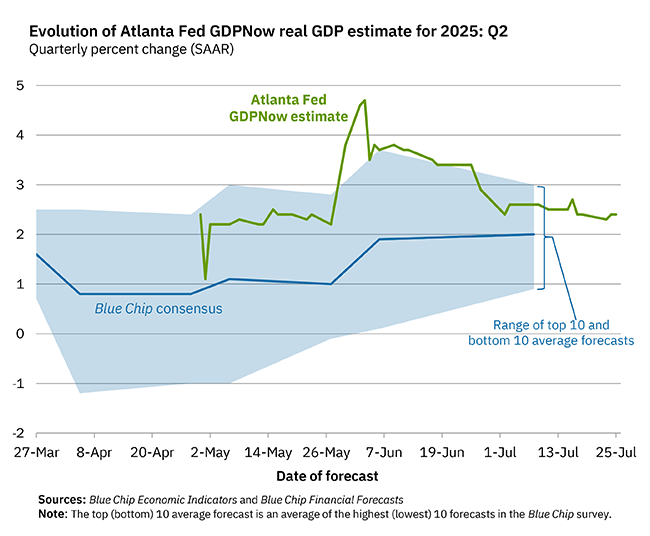The economy increasingly looks like it is hurtling toward a recession.
The Federal Reserve Bank of Atlanta’s GDPNOW economy tracker plunged even deeper into negative territory on Friday, falling from minus one percent to -2.1 percent. For nearly two weeks prior to this week, the tracker had shown zero growth.
The reading was pushed down by data about manufacturing and construction spending. The Institute of Supply Management said on Friday that its barometer of manufacturing activity fell to the lowest level since May 2020, when the economy was staggering from the onset of the pandemic and lockdowns. The Commerce Department’s report on construction spending showed a 0.1 percent drop, the first decline in 8 months.

The GDPNOW tracker is intended to show what recent data imply for current economic growth. It does not attempt to forecast growth based on unreleased data. So today’s negative reading could be supplanted by a positive reading in the future if incoming data is consistent with economic growth.
The economy shrank 1.6 percent in the first quarter. As a rule of thumb, two consecutive quarters of economic contraction are considered a recession, although the official declaration of when recessions begin and end comes from an obscure committee of economists affiliated with a private organization called the National Bureau of Economic Research and is based on more complex, subjective, and less transparent analysis.
Economists are increasingly worried about second-quarter growth. Bank of America slashed its forecast to zero on Friday morning, prior to the publication of the data that sent GDPNOW down.
Real consumer spending, for example, grew at just a 1.8 percent rate in the first quarter, according to the revised data released by the Commerce Department on Wednesday. That was down from the initial estimate of 3.1 percent growth. Economists polled by Econoday had estimates that ranged from 2.9 percent to 3.1 percent, with a median prediction of 3.1 percent. So the estimates were not even in the ballpark of reality.
The Commerce Department’s Personal Consumption Expenditure data released for the first quarter and the month of May indicated that consumer spending has been more or less flat since January. Inflation-adjusted household earnings have fallen, with wage gains swamped by rising prices. PCE inflation, the Fed’s favored measure of price changes, remained at 6.3 percent in May, defying predictions that it would come down as the Fed imposed the biggest rate hike in this century.

COMMENTS
Please let us know if you're having issues with commenting.